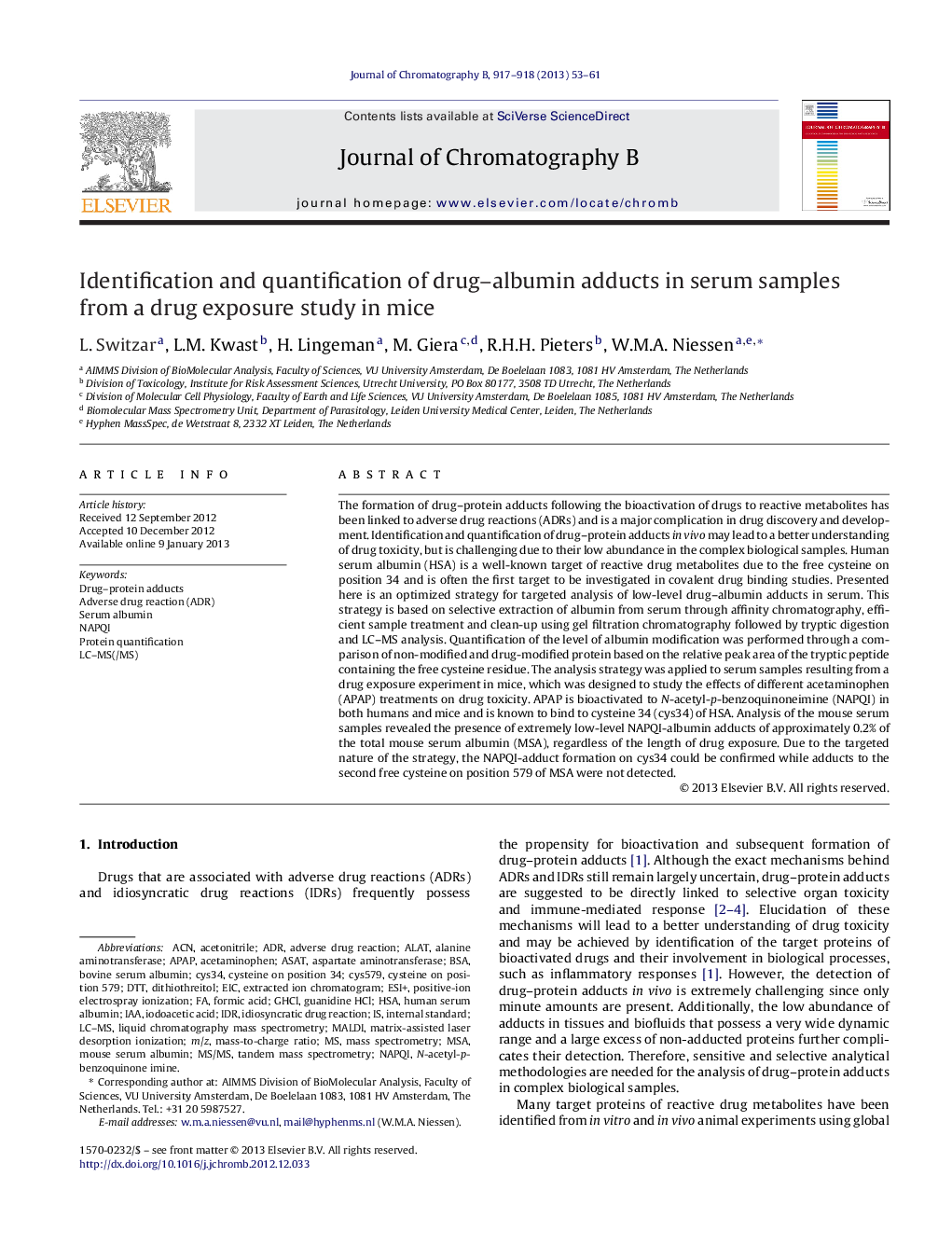| کد مقاله | کد نشریه | سال انتشار | مقاله انگلیسی | نسخه تمام متن |
|---|---|---|---|---|
| 1213524 | 1494115 | 2013 | 9 صفحه PDF | دانلود رایگان |

The formation of drug–protein adducts following the bioactivation of drugs to reactive metabolites has been linked to adverse drug reactions (ADRs) and is a major complication in drug discovery and development. Identification and quantification of drug–protein adducts in vivo may lead to a better understanding of drug toxicity, but is challenging due to their low abundance in the complex biological samples. Human serum albumin (HSA) is a well-known target of reactive drug metabolites due to the free cysteine on position 34 and is often the first target to be investigated in covalent drug binding studies. Presented here is an optimized strategy for targeted analysis of low-level drug–albumin adducts in serum. This strategy is based on selective extraction of albumin from serum through affinity chromatography, efficient sample treatment and clean-up using gel filtration chromatography followed by tryptic digestion and LC–MS analysis. Quantification of the level of albumin modification was performed through a comparison of non-modified and drug-modified protein based on the relative peak area of the tryptic peptide containing the free cysteine residue. The analysis strategy was applied to serum samples resulting from a drug exposure experiment in mice, which was designed to study the effects of different acetaminophen (APAP) treatments on drug toxicity. APAP is bioactivated to N-acetyl-p-benzoquinoneimine (NAPQI) in both humans and mice and is known to bind to cysteine 34 (cys34) of HSA. Analysis of the mouse serum samples revealed the presence of extremely low-level NAPQI-albumin adducts of approximately 0.2% of the total mouse serum albumin (MSA), regardless of the length of drug exposure. Due to the targeted nature of the strategy, the NAPQI-adduct formation on cys34 could be confirmed while adducts to the second free cysteine on position 579 of MSA were not detected.
► A generic strategy was developed for the analysis of drug–albumin adducts in serum.
► Identification and localization of low-abundant NAPQI-albumin adducts in mouse serum.
► Quantification of low levels of drug–protein adduct formation in vivo.
Journal: Journal of Chromatography B - Volumes 917–918, 15 February 2013, Pages 53–61